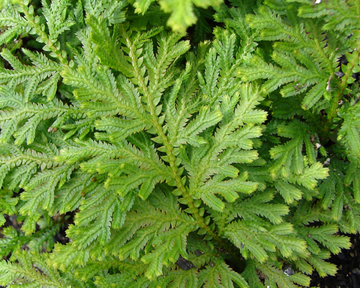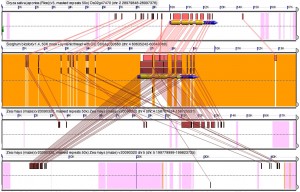Added another genome to our sequenced plant genomes wiki, Selaginella moellendorffii, better known as as a spikemoss. Selaginella is a vascular non-seed plant which split from the lineage that gave rise to most of the plants you seed around you every day hundreds of millions of years ago. At 110 megabases, Selaginella is currently the smallest sequenced plant genome (smaller than Arabidopsis!).
Un-related to genomics, did you know plants recognizably belonging to the Selaginella genus can be found in fossils 335-350 million years old? This is a plant that has remained mostly unchanged since BEFORE dinosaurs walked the earth! This was just one of the many interesting facts I learned from reading Jo Ann Bank’s review: Selaginella 400 Million Years of Separation.
As far as I could tell the Selaginella genome paper has not yet been published (I couldn’t find it anyway). The good news is that according the the Selaginella wiki (Yes, Selaginella gets its own wiki … I kind of wish maize had a wiki… ), the paper was submitted back in August of 2009, so it’s possible that any day now this genome will move from the fun-to-play-with category into the awesome-to-publish on one.

